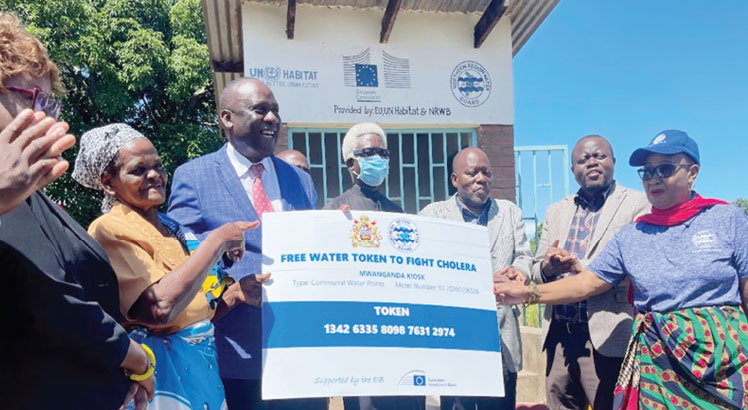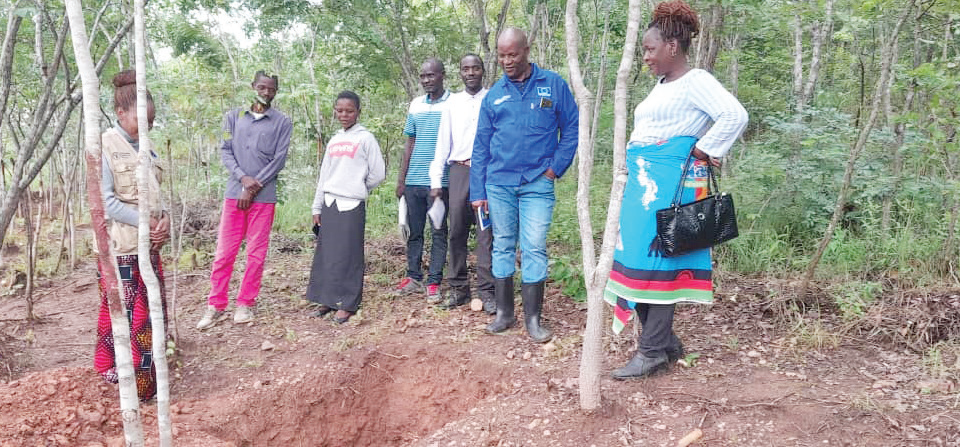Orange potatoes tackle malnutrition
Dorica Samson knew what malnutrition can do to poor children when her frail son, Chrispin, was bedridden at a rural health centre to receive nutritional supplements until he was healthy.
“While my son was being treated for malnutrition at the hospital in 2017, I received orange-fleshed potato vines which I planted the same year,” says the mother-of-five from Nambirikira Village in Dedza. “These potatoes are very rich in vitamin A and I feed my children and husband to stay healthy.”
Aged two, Chrispin continued to feed solely on breast milk, refusing to eat anything. Eventually, he fell sick and was admitted to Mtendere Community Hospital for supplementary feeding the Ministry of Health provides in collaboration with the World Food Programme (WFP) and the Government of Ireland.
The nutritional support he received put him back on track.

Of the 100 million people WFP aims to reach in 2020, almost 22 million are children and breast-feeding mothers in need of lifes-saving malnutrition prevention and treatment.
WFP estimates that Covid-19 could push a further 130 million into severe hunger, bringing the total to 265 million.
Figures from Johns Hopkins University, published in The Lancet, show that 1.2 million children aged under five could die over the next six months if healthcare and food markets are disrupted.
William Magombo, a health surveillance assistant at Mtendere Community Hospital, has many stories like Samson’s. He fears that children like Chrispin could slide into worse nutritional gaps likely to slow their physical and mental growth.
“We have been raising awareness among pregnant and breastfeeding women on nutrition and healthy diets,” he says. “However, to sustain them on the path to recovery, we train them to grow and prepare locally available foods, such as the orange-flesh sweet potato, beans, groundnuts and other foodstuffs.”
Malawi faces high levels of stunting that results from poor childhood diets and infections, with about 37 percent of children being too short for their age.
An estimated 56 00 children aged below five suffer acute malnutrition and only eight percent of children below two consume the minimum acceptable diet.
While stunting rates have gone down almost 10 percent since 2010, the height-for-age sign of malnutrition remains high as more than a third of the children are affected.
Childhood malnutrition in the country is made worse by impacts of recurrent climate shocks, including drought, hailstorms and flooding.
Without access to adequate food and nutrition, children under five are at high risk of acute malnutrition, which can result in irreversible setbacks to their development for the rest of their lives.
Usually, when children fall sick with malnutrition, they are taken to the nearest health centre to receive Super Cereal Plus, a nutrient-rich, high-energy porridge flour.
But some children with underlying issues can fall sick again after showing signs of recovery.
While Chrispine was being treated, his mother was involved in a women-led programme to learn how to grow and prepare nutritious food for her family through health and nutrition sessions conducted by health monitors.
This is where she got the vines of the orange-fleshed sweet potatoes she planted.
Potato complements foodstuffs such as maize, soya beans and groundnuts which she grows on her farm.
From these, with the training she got at the hospital, Samson and her family of six have a rich and nutritious diet.
Dorica now has a six-month-old baby, but does not need to go again to the hospital for nutrition support.
Despite the restrictions on movement and gatherings, Samson has all nutritional solutions for her family right at her doorstep.
She says: “I make porridge and fritters from the potato and Chrispin likes it so much. It is delicious and full of nutrients.
“I feed the entire family and they love it.”
With this potato and other crops I grow, Samson has enough food.
“Even with the baby, I do not go to the hospital for nutrition support,” she brags.






One Comment